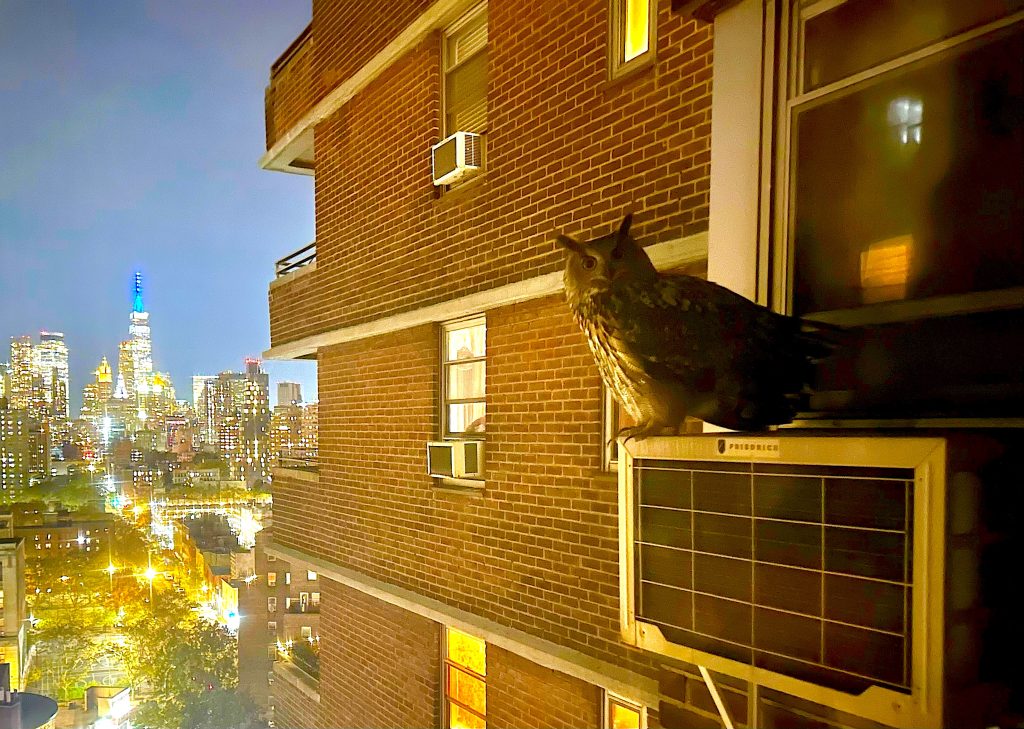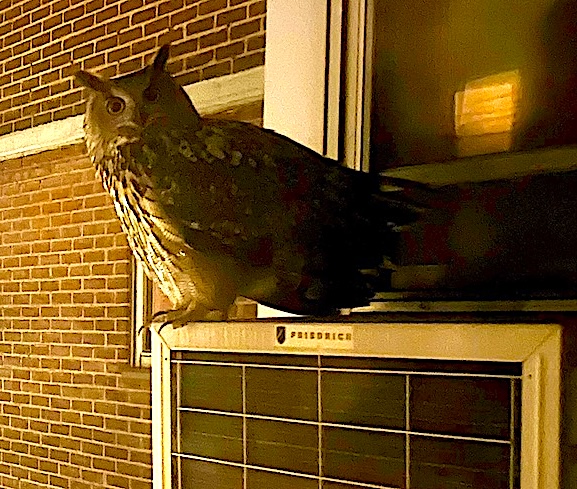BY THE VILLAGE SUN | Flaco, Manhattan’s favorite, free-flying Eurasian eagle-owl, was sadly killed Feb. 23 after swooping into a building on W. 89th Street. He was found badly injured on the sidewalk and died shortly after. He would have turned 14 in March.
Flaco, who escaped from the Central Park Zoo a year ago through a hole in his cage, lived in Central Park and on the Upper West Side. In November, though, he briefly winged it to the Lower East, possibly in search of a mate, bird experts think. However, his lovelorn hoots were in vain, being the only owl of his species in the wild in North America.
Following the famed avian’s demise, state Senator Brad Hoylman-Sigal announced “a renewed push for two pieces of legislation that will make the skies safer for birds.” One, the Bird Safe Buildings Act, will be renamed The FLACO Act (“Feathered Lives Also Count Act”) to “honor the impact that Flaco had on New York City.”
The FLACO Act will require new or significantly altered New York State-owned buildings to incorporate bird-friendly designs, particularly in their windows.

In addition, the Dark Skies Protection Act would cut New York’s light pollution by “requiring that most nonessential outdoor lighting be covered by an external shield, be motion-activated or be turned off between 11 p.m. and 5 a.m.” Around 80 percent of migrating birds move at night. But light pollution can disrupt their natural sense of their environment, drawing them into urban areas and disorienting them, causing them to fly into buildings, windows and other structures.
“I’m gutted at the death of Flaco the owl, who delighted countless New Yorkers,” Hoylman-Sigal said. “His death after apparently striking a glass window pane raises the importance of our passing common-sense laws to help stop preventable window strikes, which kill millions of birds, like Flaco, each year.”
Assemblymember Deborah Glick, chairperson of the Assembly’s Committee on Environmental Conservation, is a huge animal lover and has passed a number of bills to improve animal welfare.
“It is terribly sad,” she said of Flaco’s death. “The person who vandalized his enclosure — whether it was just mischief or an attempt to ‘set him free’ — caused his death. He was only 14 and could have lived for many, many more years. It’s hard to know what part of the structure he flew into or whether he was disoriented from ingesting poisoned prey. The point is he was not in his native habitat and the vandalism ultimately led to his death.”
However, the debate continues over whether it was better for Flaco finally to be able to stretch his awesome, nearly 6-foot wingspan and fly free — for one year, at least — versus spending the rest of his days cooped up in captivity in an enclosure the size of a department store window. How Flaco felt about it seems clear: He never flew back to his cage.


Modifications to windows for birds is an excellent idea! (So is affordable housing.) And light controls as described won’t cost anything.
Growing up in CT, we had a house with 4 large glass windows. Birds would sometimes fly into the glass. When they did, they would often die. Awnings, window coverings or decals can help.
I am a pet owner and animal advocate but please, prioritize affordable housing so New Yorkers aren’t sleeping on the sidewalks?!!
And kudos to Brad and Deborah for sponsoring much-needed bills
Thanks for posting this story about much needed laws to protect birds from fatal collisions with buildings in this town. Flaco lives in the hearts and souls of all freedom lovers!